The dumbbell front raise is popular for building shoulder size, strength, and mobility.
It is an isolation exercise that involves lifting dumbbells in front of you. It primarily targets the anterior head of the deltoid muscle.
When you perform them over a period of time, it increases muscular hypertrophy, improves muscular endurance, and enhances neuromuscular control connections.
There are many variations of the dumbbell front raise that will challenge your shoulder muscles even further and help build strength and definition. Some variations include.
- Single arm front raise
- Seated front raise, and
- Front to lateral raise…many MORE.
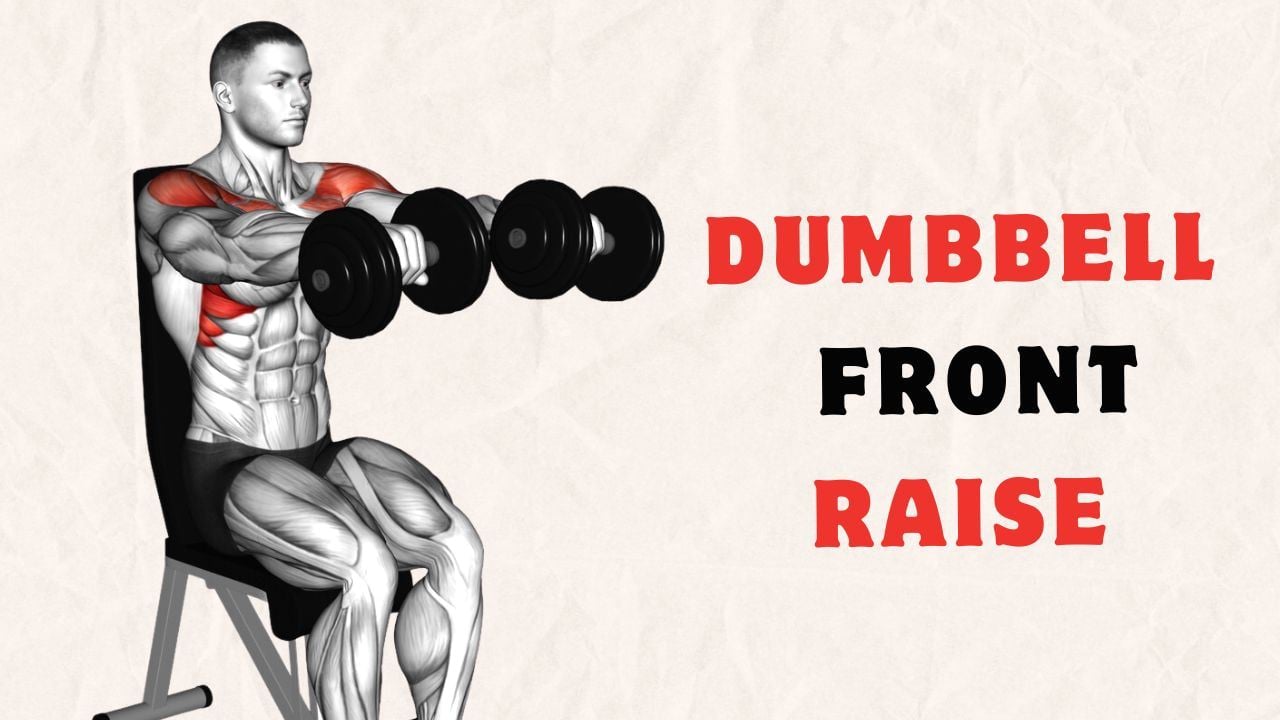
- Dumbbell Front Raise Muscles Worked
- How To Do Dumbbell Front Raise
- Tips and Form
- Best Variations Of Front Dumbbell Raise
- 1. Seated Dumbbell Front Raise
- 2. Alternating Dumbbell Front Raise
- 3. Chest Supported Dumbbell Front Raise
- 4. Single Arm Dumbbell Front Raise
- 5. Incline Dumbbell Front Raise
- 6. Dumbbell Front To Lateral Raise
- 7. Neutral-Grip Dumbbell Front Raise
- References
Dumbbell Front Raise Muscles Worked
The primary Muscle Worked during front dumbbell raises is the Anterior deltoid, (Front portion of the deltoid muscle)
Secondary Muscle Worked: The Lateral deltoid, posterior deltoid, upper chest, upper trap, supraspinatus (a rotator cuff muscle), and serratus anterior (muscles along your ribs under your armpit) also contribute to the movement.
A handful of other muscles work or play the role of stabilizer muscles, including your forearm (wrist flexors) and core Muscles (Obliques and Rectus abdominis).
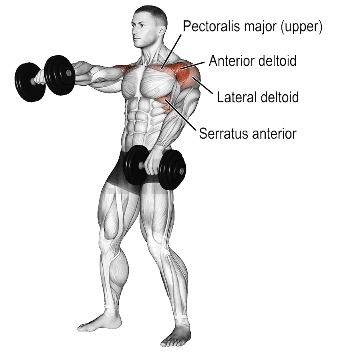
How To Do Dumbbell Front Raise
- Stand with your feet shoulder-width apart.
- Hold a dumbbell in each hand with an overhand grip (palms facing down).
- Keep your arms straight down in front of your body.
- Keeping your elbows straight, lift the dumbbells in front of you until they are at shoulder level.
- Keep your palms facing down throughout the movement.
- Pause at the top of the movement, then slowly lower the dumbbells back down to the starting position.
Tips and Form
- Start with a lighter weight and focus on proper form before increasing weight.
- Avoid lifting the weight too high. Lifting weights above shoulder level can strain your rotator cuff muscles. Focus on lifting the weight to shoulder level or slightly above.
- Don’t lean forward, as it puts too much pressure on your lower back. Maintain an upright posture.
- Avoid using swinging movements or body momentum to perform the exercise.
- Avoid cutting the range of motion short, as this reduces the shoulder’s tension and decreases the exercise’s effectiveness.
- Make sure to breathe out when you lift the weight and breathe in when you lower it back down.
- A good starting point is to perform 3–4 sets of 8–12 reps. However, you can adjust the number of sets and reps according to your fitness level and goals.
- If you are a beginner, start with a lighter weight, such as 5–10 pounds per dumbbell. As you get stronger, you can increase the weight to 10–15 pounds per dumbbell.
- You can perform dumbbell front raises as part of an upper body or during push pull Leg workout Split.
- You can do dumbbell front raises once or twice a week. To maximize results, it is important to allow your muscles to recover between workouts.
Best Variations Of Front Dumbbell Raise
1. Seated Dumbbell Front Raise
The seated dumbbell front raise allows beginners to focus on mastering the movement pattern without worrying about lower back engagement.
It’s a great way to target the front deltoids while minimizing the involvement of other muscle groups.
It is ideal for people who want to build shoulder strength without putting too much strain on other parts of the body.
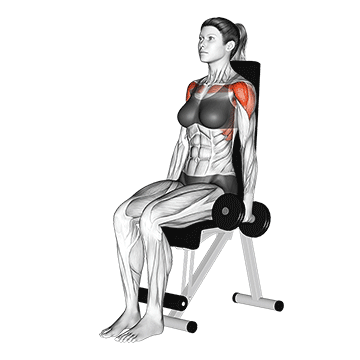
How To Do
- Sit on a bench or chair with your feet flat on the ground and your spine straight.
- Hold a dumbbell in each hand, with your arms at your sides and your elbows slightly bent.
- Slowly raise the dumbbells in front of you.
- Lift your arms until they are parallel to the ground or just below shoulder height.
- Hold for a brief moment, and then slowly lower the dumbbells back down to the starting position.
2. Alternating Dumbbell Front Raise
The alternating variation is for you if you struggle to maintain proper form with both dumbbells simultaneously.
This variation involves lifting one dumbbell at a time, alternating between the left and right arms, rather than lifting both dumbbells simultaneously.
It allows one arm to rest while the other is working, which can make it easier to perform more reps or lift heavier weights.

How To Do
- Hold a dumbbell in each hand. Stand with feet shoulder-width apart and your knees slightly bent.
- Raise one dumbbell (say right hand) in front of you until it reaches just above shoulder level.
- Now lower the weight (of the right hand) while raising the left in front of you.
- Perform this exercise in this alternating manner.
3. Chest Supported Dumbbell Front Raise
If you rely on momentum or swinging your body to lift the weights during standard front raises, the chest-supported variation can help you correct your form and isolate the anterior delt.
The bench also gives you more stability, so you can lift weights with confidence and safety.
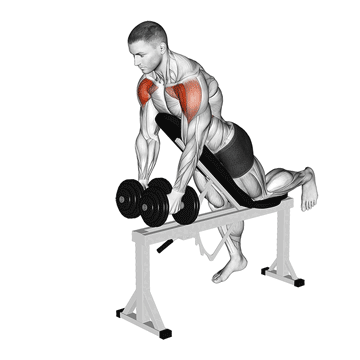
How To Do
- Lie face down on an incline bench, with your chest and stomach resting on the bench.
- Hold a dumbbell in each hand and keep your elbows slightly bent.
- Lift the dumbbells up until they are at shoulder level.
- Hold for a second, and then slowly lower the dumbbells back to the starting position.
4. Single Arm Dumbbell Front Raise
The one-arm dumbbell front raise, also known as the unilateral dumbbell front raise is an excellent exercise for identifying and building anterior deltoids and the upper chest.
When you are working one arm at a time it allows for a greater range of motion and better muscle activation and development.
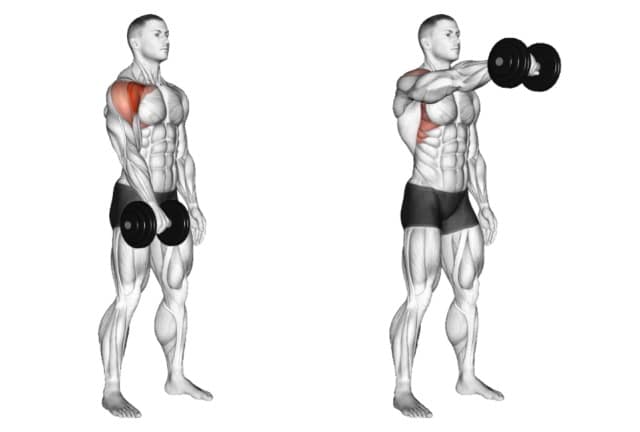
How To Do
- Stand holding a dumbbell with one hand at thigh level.
- The feet are shoulder-width apart, and the knees are slightly bent.
- Lift the dumbbell in front of you. Hold for a count of two.
- Now, slowly lower the dumbbell and return to where you started.
- Perform all reps on one side and then repeat with the other arm.
5. Incline Dumbbell Front Raise
The incline dumbbell front raise is done while lying face down on an incline bench. This changes the angle of the movement and puts more emphasis on the front deltoids and upper chest.
It also allows you to use heavier weights due to the support of the bench.
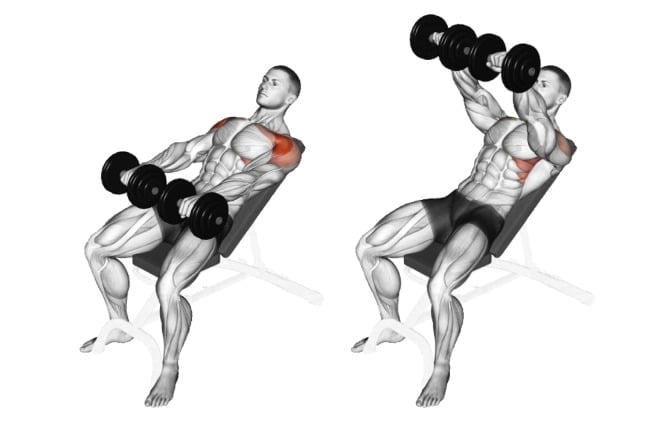
How To Do
- Adjust an incline bench to a 45-degree angle and lie face down on it.
- Hold a dumbbell in each hand with palms facing each other.
- Let your arms hang straight down toward the floor with a slight bend in your elbows.
- Lift the dumbbells up in front of you with your arms straight.
- Hold the position for a second, then return the dumbbells to their original position.
6. Dumbbell Front To Lateral Raise
The dumbbell front-to-lateral raise is an exercise that combines the front raise and the lateral raise that work both the anterior (front) and lateral (side) deltoids in a single, fluid motion.
The transition between the two movements improved coordination and control, neuromuscular efficiency and shoulder stability.

How To Do
- Hold a pair of dumbbells in front of you with your palms facing in.
- Keep your core engaged and your upper body stable.
- Keep your arms straight and raise the dumbbells in front of you.
- From here, move the dumbbells to the side while keeping your arms straight.
- Then, slowly lower the dumbbells back down to the starting position.
7. Neutral-Grip Dumbbell Front Raise
The dumbbell front raise with a neutral grip is a great exercise that targets the front of the shoulders.
Using a palms facing in, neutral grip will be easier on the shoulder joint.
It strengthens the shoulders slightly differently, which is beneficial for building shoulder strength and improving shoulder stability.
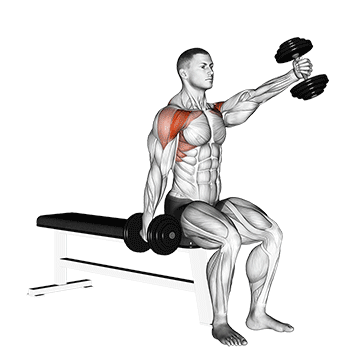
How To Do
- Hold dumbbells in each hand. Keep your palms facing each other.
- Lift one dumbbell straight up in front of you until it reaches shoulder level.
- Hold this position for a second, then lower the dumbbell to the starting position.
- Repeat with the other arm.
- Continue alternating between your left and right arms for the desired reps.
References
- Coratella G, Tornatore G, Longo S, Esposito F, Cè E. An Electromyographic Analysis of Lateral Raise Variations and Frontal Raise in Competitive Bodybuilders. Int J Environ Res Public Health. 2020 Aug 19;17(17):6015. doi: 10.3390/ijerph17176015. PMID: 32824894; PMCID: PMC7503819.
- Botton C, Radaelli R, Wilhelm E, Rech, A, Brown L, Pinto R. Neuromuscular adaptations to unilateral vs. bilateral strength training in women. J Strength Cond Res. 2016;30(7):1924-32. doi:10.1519/JSC.0000000000001125

Manish is a NASM-certified fitness and nutrition coach with over 10 years of experience in weight lifting and fat loss fitness coaching. He specializes in gym-based training and has a lot of knowledge about exercise, lifting technique, biomechanics, and more.
Through “Fit Life Regime,” he generously shares the insights he’s gained over a decade in the field. His goal is to equip others with the knowledge to start their own fitness journey.
